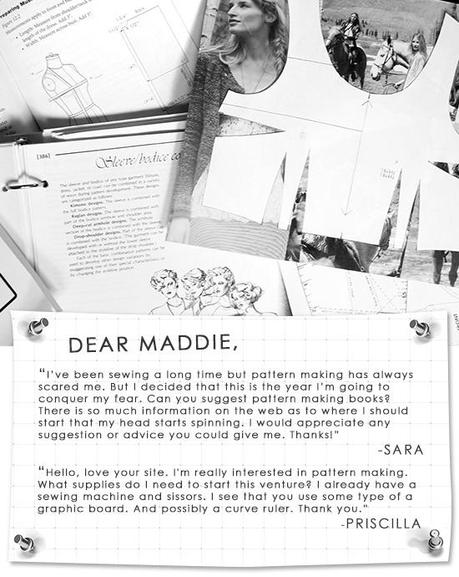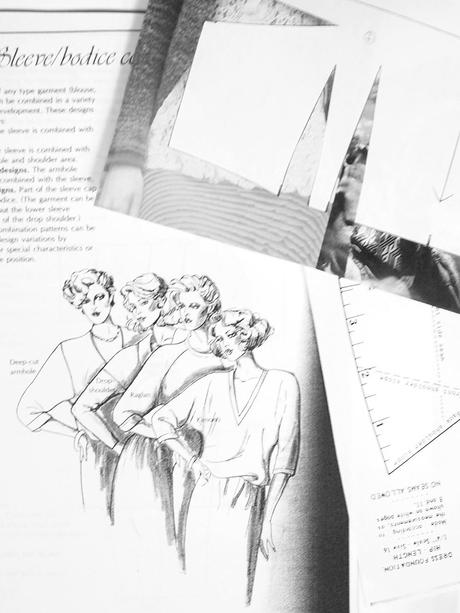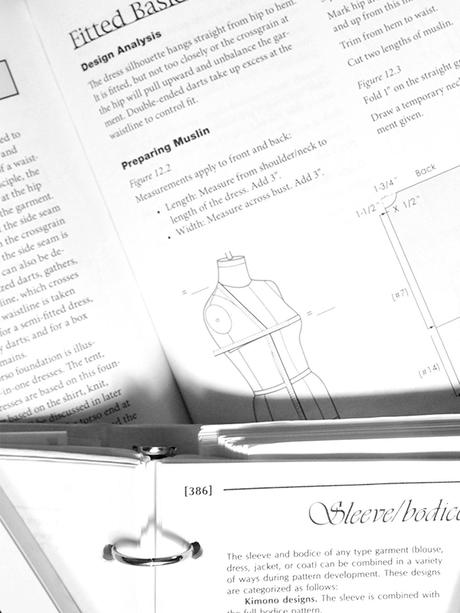
I have an arsenal of pattern making books and tools. A living room doesn’t exist in my apartment because a sewing studio has replaced it. In my silverware drawer and next to my spoons and forks are scissors and curved rulers. In the dividers that hold my utensils are also seam rippers and awls. My bookshelf is not full of fashion magazines or light summer reading but textbooks on fitting, pattern making, and construction. And hanging next to my coats in my closet are fabrics upon fabrics. I have all these tools at my fingertips, and they’re all great resources, but if I was cast to an abandoned island for the rest of my life, let’s say for breaking a coveted sewing rules like pressing the right side of the fabric without a press cloth, I would have no problem choosing a few essential items. These items, mostly books and tools, would keep me sane for the rest of my life. The only other thing I would need would be a hair dryer.

Originally published in 1965, this book represents the way pattern making used to be. I love this book. Love, love. It is geared towards both students and professions – it not only shows how to draft and grade a basic bodice, skirt, and pant but also how to transform the pattern into other designs. Most modern day textbooks give a few pattern variations but this one gives tons. Tons! If I had to guess, one hundred plus variations are provided. And what’s neat is that you learn about silhouettes that are now dated but were once cool – pinafores, chemises, push up sleeves, winged sleeves, etc.

This is the classic pattern making, tailoring, and dressmaking textbook. It is used for many introduction to pattern making classes and many technical designers and pattern makers keep it at their disposal. When I started as an Assistant Technical Designer, I was required to make a sloper. Because the industry sends their blocks/slopers to manufactures to create patterns for their design, it was important that I knew how to create one. I used this book to draft my bodice and skirt slopers as well as fit it. It has been published for many years and it’s important what year you buy. The newer versions have eliminated or changed important information. The version that I used to draft my sloper and develop my tutorials was from 1987.

This book is severly outdated – 1980s, poofy hair, and blue eye shadow – but the content within it is great. It shows common fitting errors on all types of garments (shirts, pants, jackets) and how to correct the pattern. What’s great is that it uses photos (and not sketches) to show the fit issues and how to fix it.



This book gets you familiar with the production side of pattern making, familiarizing readers with procedures and terms used within the industry. It contains standard measurements for sizes, how to measure garments flat, and grade rules for alpha and numeric sizes. To be honest, there’s not a lot of information in it but it’s a great resource for me when I’m grading a pattern or when I have a measurement question? Does a rise grade the same for all sizes or does it jump like other width grades? This books answers questions like that.

Once you understand the basics of pattern making, this book will be a fun read. You probably won’t make any of the patterns but you will be amazed at how a basic pattern can be manipulated to create crazy designs.

For pattern making, there are only a couple of tools that I need and constantly use – a straight ruler (this one and this one), an L-square, a curved ruler (this one and this one), French curves, paper, pencil, and eraser. There are a lot more pattern making supplies that make drafting and manipulating pattern easier, such as a cutting board, but you can definitely improvise. A trait of a good seamstress is innovation, being handy, and coming up with solutions when you don’t have tools at your disposal.

